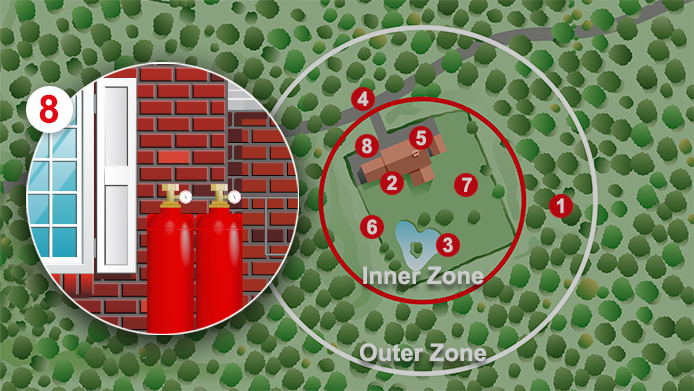Introduction to preparing your property for bushfire
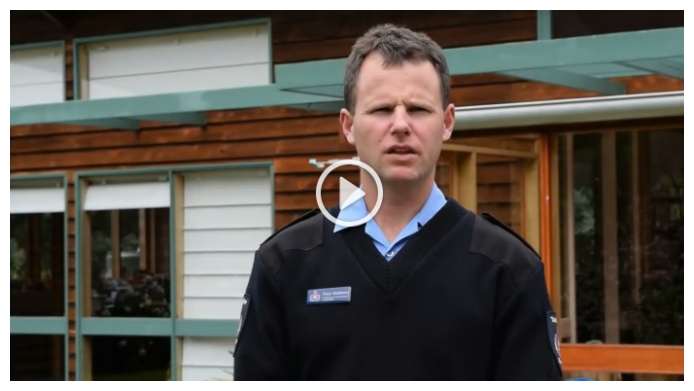
Introduction
The eight aspects to preparing your property are presented in the following chapters to help you assess the hazards and risks so you can plan and prepare to be safe from bushfire.
The eight aspect chapters are defendable space, vegetation management, water supply, access, building improvements, maintenance activities, personal capacity and potential hazards.
Attachments:
Defendable space
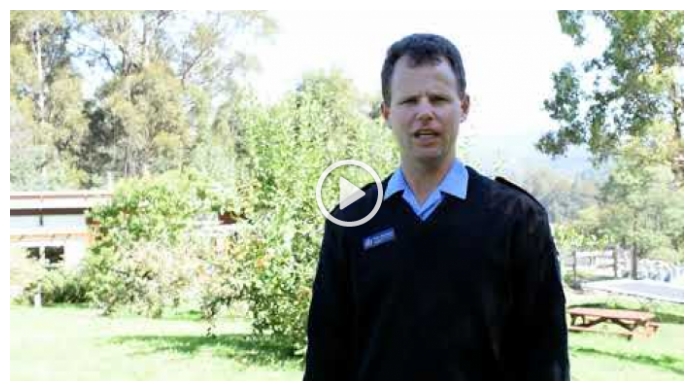
1. Defendable space
Defendable space is an area around your home where the vegetation is managed to reduce the intensity of any potential bushfires. By having defendable space you can reduce the amount of direct flame contact and radiant heat that could potentially impact your house during a bushfire. Remember, the radius of defendable space increases with the degree of slope of the property and may go over the boundary into a neighbour’s property. In such a case you and your neighbour may need to look at co-operation to achieve adequate defendable space.
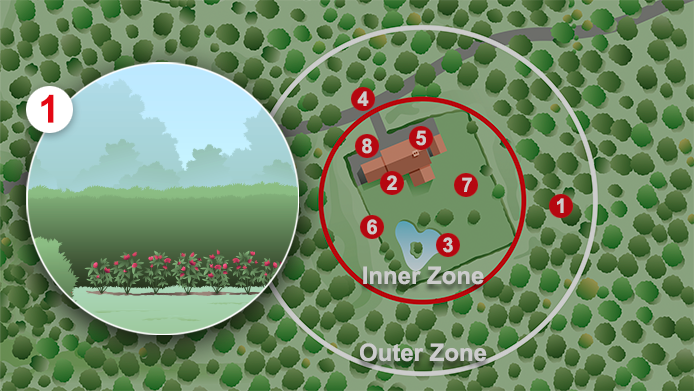
Attachments:
Links:
TFS defendable space guideVegetation Management and Landscaping
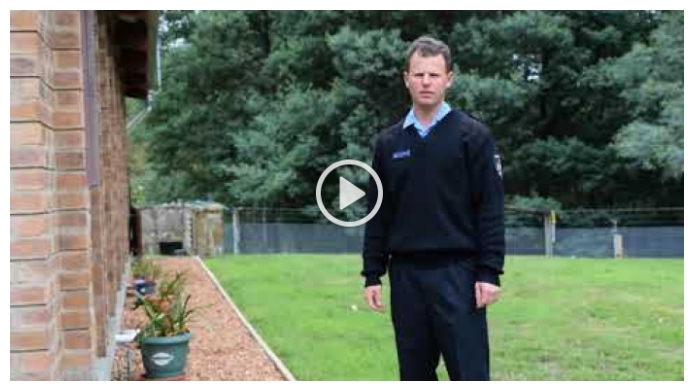
2. Vegetation management and landscaping
Managing vegetation will help you survive the passage of a fire front, reduce the chance of direct flame contact, reduce the impact of radiant heat and help protect your home from ember attack.
- Inner zone - Flammable materials on, under and around your home should be moved away from the house, this area is utilised as a building protection zone.
- Outer zone - Small-sized natural fuels (such as leaf litter, bark, sticks, tussocks and some shrubs) should be removed and larger fuels (trees and shrubs should be cut back to reduce the intensity of an approaching bushfire). This area is utilised as a fuel modified buffer zone.
- It will remain the responsibility of the land owner / resident to ensure any removal of vegetation from the prescribed modified fuel zones complies with all relevant environmental; threatened species and biodiversity acts in relation to flora & fauna.
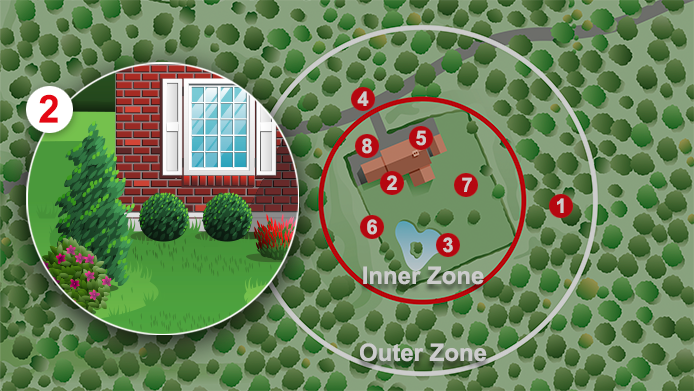
Attachments:
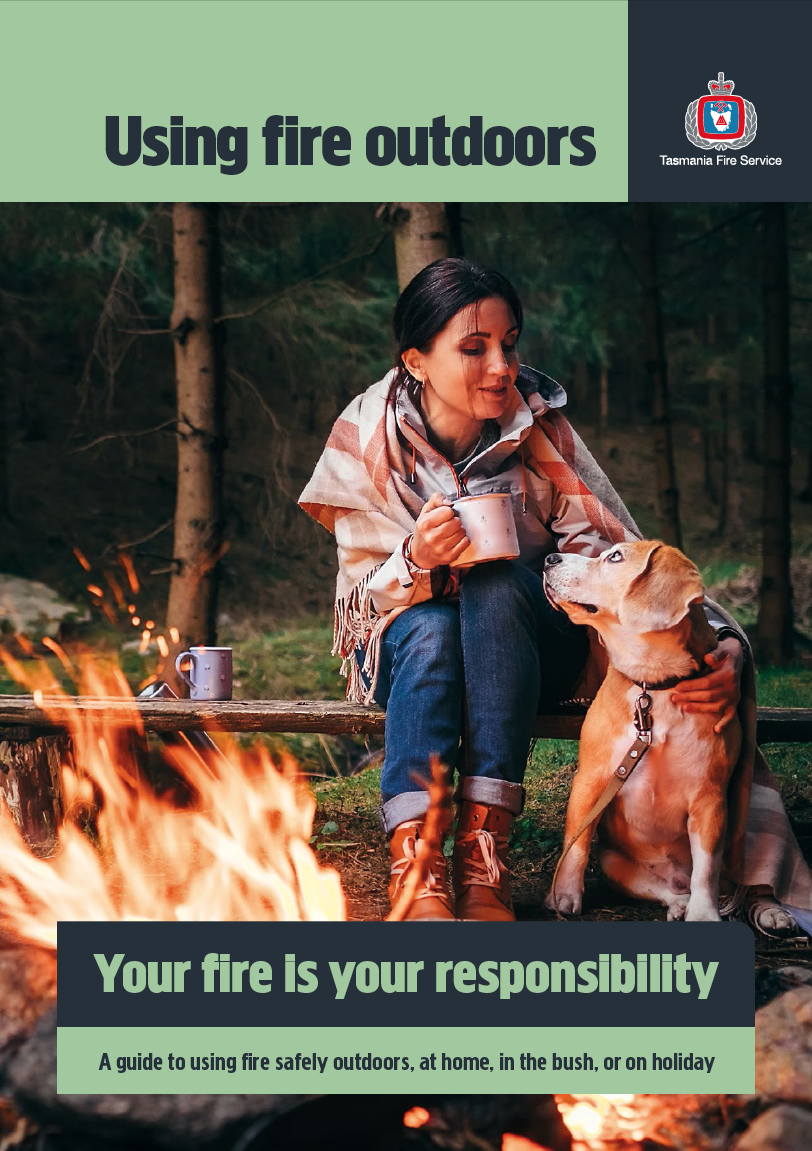
Water Supply
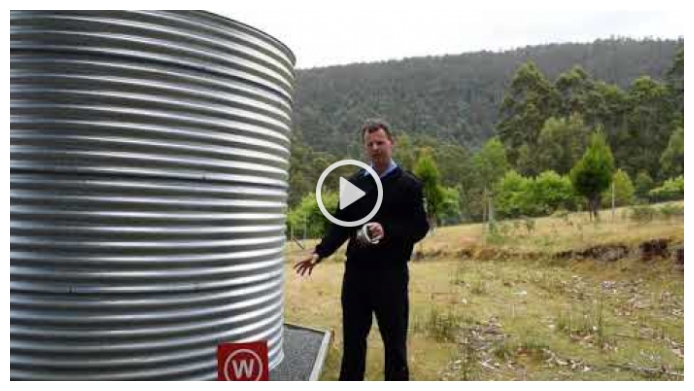
3. Water supply
Even if your plan is to leave early, there may be situations that occur which prevent you from leaving and you may need to actively defend their property. A critical part of defending a property is having a reliable water supply available, a suitable petrol powered fire pump and enough hoses to deliver it.
Recommendation of a dedicated 10,000 litre water tank for firefighting with a 65 mm valve with a DIN or NEN standard forged Storz 65 mm adaptor fitted with a suction washer (the old 64mm 5V thread is still in use and acceptable). The latter, enables TFS brigade to connect to your tank supply to defend the property. These are available from Tas Fire Equipment agricultural and irrigation suppliers.
Plastic tanks, exposed plastic pipes, fittings and hoses may melt in the heat of a fire - just when you need them the most. To avoid this:
- Install steel or concrete tanks. If installing a plastic tank, ensure it is at least 30 metres from the bush, and not too close to any other fuels such as a woodpile, shed, shrubs and other flammable fuels.
- Use metal pipes and pipe fittings rather than plastic fittings above ground, and
- Bury any plastic pipes (PVC and poly pipes) at least 30 centimetres underground.
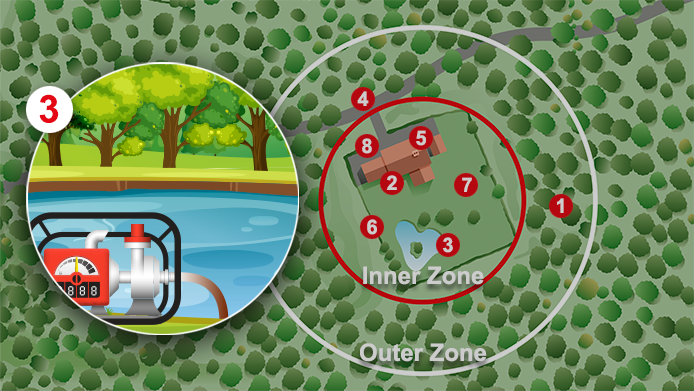
Attachments:
Access
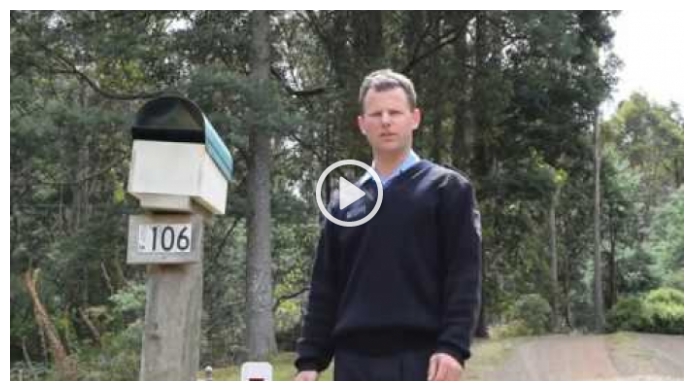
4. Access
There may be a situation that requires a TFS vehicle to enter your property to deal with an emergency. It is recommended that there is sufficient access in place for TFS vehicles to enter and turn if necessary. If your home is set back from the road and a fire truck needs to use your driveway, it should have a minimum width of 4 metres, clear to a height of 4 metres. Any bush 2 metres either side of the driveway should be cleared as for the outer zone. The inner radius of any turns should be no less than 10 metres, and there should be adequate room at the end of the driveway for a fire truck to turn around.
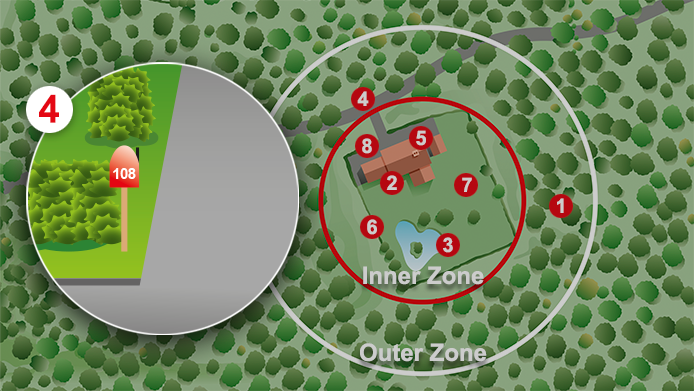
Attachments:
Building Improvements
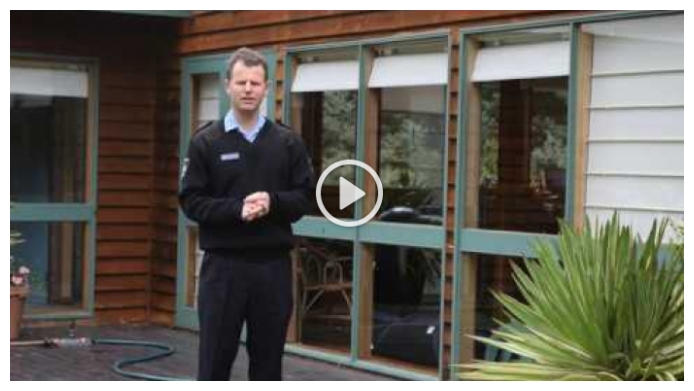
5. Building improvements
Your house and any adjoining structures need to be well constructed to deal with the impact of bushfire, including being able to withstand ember attack by having all openings sealed to prevent ember entry. Key components for consideration are: roof; windows; doors; vents and decks.
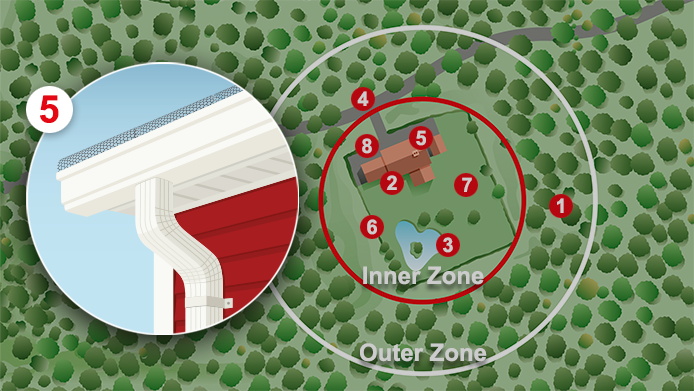
Attachments:
Links:
Building for BushfireMaintenance activities
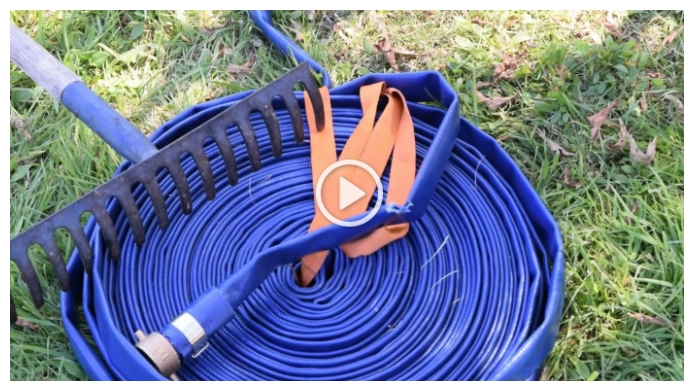
6. Maintenance activities
Prior to and during the bushfire season there are maintenance activities that can help keep your property fire ready. These may include; keeping gutters clean, testing firefighting equipment, removing accumulations of bush litter, etc.
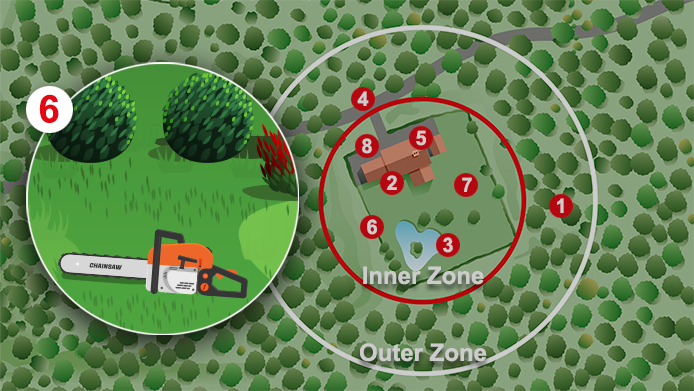
Attachments:
Awareness of Personal Capacity
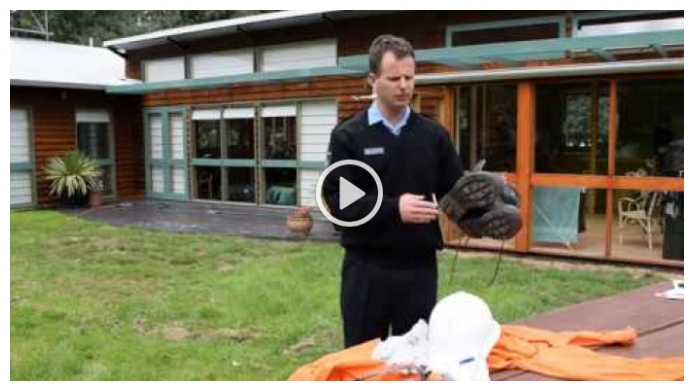
7. Awareness of personal capacity
Your physical and psychological risks need to be considered when making your bushfire survival plan. If you decide to stay and defend then you need to understand that it will be hot, scary, tiring, hard to see, hard to breath and extremely hard work.
As part of your household bushfire survival plan you need to consider whether you will leave the property early (well before the bushfire is in your area) or stay and defend.
Discuss the bushfire survival plan with your household. It is important for your family to discuss and make a plan before the arrival of the bushfire season. On a day that there is an elevated Fire Danger Rating (FDR) or a bushfire threatens or arrives, it is too late to undertake preparation and planning.
Your plan must do two things:
- Identify what needs to be done to protect the property to increase its survival; and
- What action will the you take: ‘leave early’, ‘stay and defend’ or a combination of both. It is important to have back-up plans b and c.
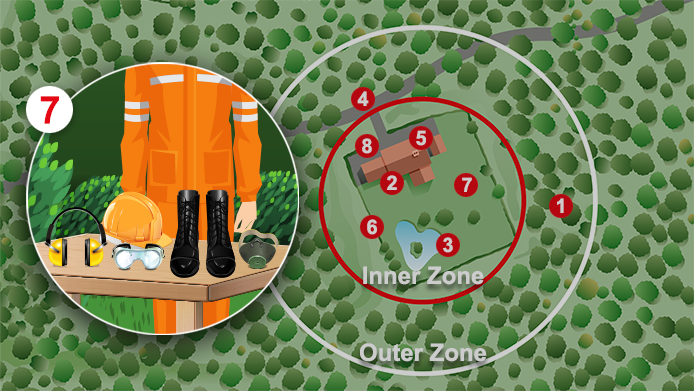
Attachments:
Potential Hazards
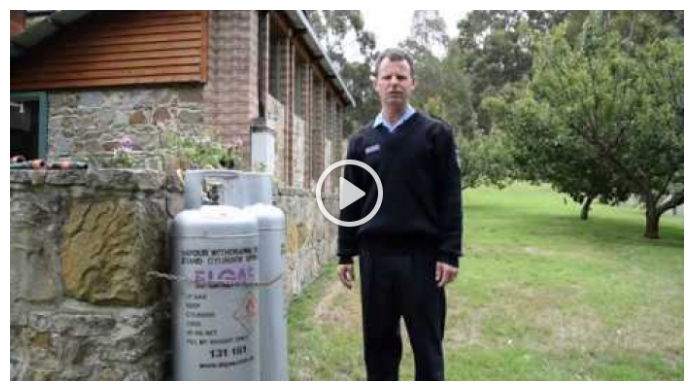
8. Potential Hazards
Be aware of issues like electricity supply, LPG, firewood storage etc. that could impact on your personal safety if it’s your intention to ‘stay and defend’ your home.
